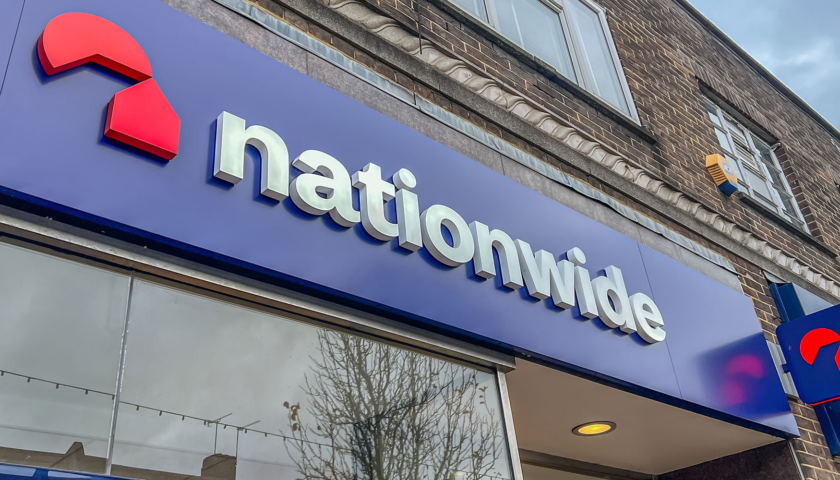Mortgage rates are on the rise for the first time in eight months, as lenders exercise caution ahead of possible tax rises in November’s Budget.
Typical rates on two and five-year fixed mortgages edged up by 0.02 percentage points over the last month, having moved downwards consistently since February.
The average two-year fix is now 4.98 per cent while the average five-year fix is 5.03 per cent, according to new data from rates scrutineer Moneyfacts.
On a £200,000 mortgage being repaid over 25 years that would mean paying either £1,167 a month or £1,173 a month.
Fixed rate mortgage pricing is most heavily influenced by where money markets expect interest rates to head in the future.
After entering a historic deadlock on the most recent decision, the Bank of England looks unlikely to cut rates again in 2025.
And with inflation remaining high, up 3.8 per cent in the 12 months to August, there is a greater chance of that scenario playing out.
This means mortgage rates are unlikely to experience big falls for the time being – at least until further base rate cuts are thought to be likely.
For the vast majority of households, a fixed mortgage rate somewhere between 3.8 and 5 per cent should be achievable depending on the level of equity or size of deposit.
Mortgage rates: what happened
The Bank of England held base rate to 4 per cent last month. However, base rate has dropped by 1.25 percentage points since August 2024 when it was first cut from 5.25 per cent.
It’s fair to say the mortgage market is somewhat more settled now.
In 2023, a combination of base rate hikes and worries over inflation figures saw average two-year fixed mortgage rates reach a high of 6.86 per cent in the summer, according to Moneyfacts, while five-year fixed rates hit 6.35 per cent.
However, mortgage rates still remain far higher than borrowers had enjoyed prior to the surge in 2022.
Little more than three years ago, the averages were hovering around 2.5 per cent for a five-year fix and 2.25 per cent for a two-year.
As recently as October 2021, some of the lowest mortgage rates were under 1 per cent.
Will mortgage rates go down or up?
The current expectation is that the Bank of England will not cut rates again in 2025, though there is still a chance it could make one further reduction.
This expectation has fed through into Sonia swaps, an inter-bank lending rate which forecasts where mortgage rates will be in two or five years. Lenders use this to determine fixed-rate mortgage pricing.
As of 17 October, two-year swaps are at 3.59 per cent and five-year swaps are at 3.63 per cent – only slightly below the lowest mortgage rates.
These will need to fall further for fixed rate mortgages to see any further dramatic falls.
Inflation and mortgage rates spike
Mortgage rates first began to increase towards the end of 2021, when inflation started to rise, resulting in the Bank of England increasing base rate to try and combat it.
The aftermath of the Covid lockdowns, combined with Russia’s invasion of Ukraine in February 2022, triggered a huge inflation spike. Central banks were caught on the hop and rushed to try to rein this in with higher interest rates.
Mortgage pricing: a rough guide
Mortgage market expectations are reflected in something known as Sonia swap rates.
These are agreements in which two counterparties, for example banks, agree to exchange a stream of future fixed interest payments for a stream of future variable payments.
Mortgage lenders enter into these agreements to shield themselves against the interest rate risk involved with lending fixed rate mortgages over a period of time.
For example, if a bank lends a mortgage fixed for five years, it wants to have some certainty on what it will cost to fund that over the time period, rather than being dependent on shifting interest rates and potentially being caught out by big unexpected moves.
Put simply, swap rates show what financial institutions think the future holds concerning interest rates.
Mortgage rates accelerated after the Liz Truss-Kwasi Kwarteng mini-Budget in late September 2022, with its wave of unfunded tax cuts that unsettled bond markets.
After Truss resigned in October 2022, new Chancellor Jeremy Hunt reversed nearly all of the mini-Budget announcements. The markets calmed down and the cost of borrowing fell with mortgage rates dropping too.
But following a fresh round of stubbornly high inflation figures in late spring 2023, markets began betting the base rate would peak at 6.5 per cent. This triggered a summer inflation panic and led to mortgage lenders whacking their rates up again.
Once the inflation worries subsided, interest rate expectations eased substantially but inflation proved stickier than expected in 2024 and the Bank of England ended up holding base rate at 5.25 per cent.
With inflation finally returning to its 2 per cent target, the Bank finally felt comfortable cutting rates to 5 per cent at its August 2024 meeting and then again in its November meeting.
Having held rates in December, it cut again in February and then again in May before opting to hold in June.
In August, the bank cut rates by 0.25 percentage points to 4 per cent, where it remains today.
Inflation was 3.8 per cent in the 12 months to August, the latest ONS figures revealed.
At 3.8 per cent, inflation still sits significantly higher than the Bank of England’s 2 per cent target and this could lead to MPC members refraining from more rate cuts.
Should you fix for two or five years?
Choosing what length to fix for depends on what you think may happen to interest rates but should importantly take more account of what your personal circumstances are.
David Hollingworth adds: ‘Two-year rates are now the cheapest deals, but borrowers need to think carefully about whether longer-term security would suit them better, rather than heading straight for the lowest rate.’
Key factors include whether you may move soon, how much you prefer the security of fixed payments for longer and how well you could cope with a rise in mortgage bills.
Fixed rates of any length offer borrowers certainty over what their payments will be from month-to-month.
Those opting for a shorter two-year fix are backing interest rates falling over the next couple of years, or at least staying steady, so that when it is time to remortgage their bills won’t rise.
With five-year fixes borrowers are locking in to rates that they know won’t change for longer, perhaps either because they believe rates may rise or because they prefer the security. Five-year fixes were hugely popular when rates were lower.
If rates continue to fall, a tracker mortgage without an early repayment charge could put borrowers in a position to take advantage.
However, for all the potential benefit, a tracker product will also leave people vulnerable to further base rate hikes, while also being more expensive than fixed rates at present.
Whatever the right type of mortgage for your circumstances, shopping around and speaking to a good mortgage broker is a wise move.
Contact one of our highly experienced mortgage advisors today on 0121 500 6316 to discuss your mortgage needs.



